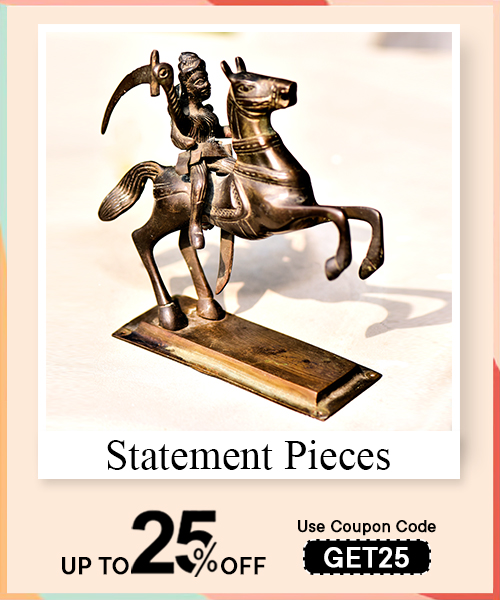Dussehra is a lively festival celebrated throughout India, representing the victory of good over evil. It honors Lord Rama's victory over the demon king Ravana and Goddess Durga's battle against Mahishasura. During this festival, Ramlila performances depict Lord Rama’s journey and the burning of Ravana, Meghnath, and Kumbhkaran effigies, symbolizing the destruction of evil. Different regions have festival variations, such as West Bengal celebrating Durga Puja alongside Dussehra and Mysore hosting grand processions.
Families come together to perform rituals, share traditional meals, and exchange gifts, creating lasting memories. As modern celebrations become more eco-friendly, Dussehra continues to be a time for reflection, unity, and reaffirming hope and righteousness, reminding us of the timeless values that connect us all.
This story is based on the Ramayana, where Lord Rama fights against Ravana, the demon king who has kidnapped his wife, Sita. Rama, his brother Lakshmana, and allies like Hanuman set out on a chase to rescue her. This story focuses on the ideas of doing what is right and having strong moral principles. Rama's victory over Ravana on the tenth day, called Vijaydashami, reminds us that good will always win over evil.
This story originates from the Devi Mahatmya, in which Goddess Durga is formed from the combined energies of the gods to defeat the buffalo demon Mahishasura. After a fierce battle that lasts for nine days, Durga vanquishes Mahishasura on the tenth day. The story highlights the power and strength of women, portraying Durga as a strong protector of the universe. Her win represents the victory of sound and the importance of divine help in overcoming disorder and oppression.
Dussehra celebrates that good ultimately wins over evil. This theme is central to many cultures and stories, reminding us that no matter how tough things get, doing what is right will lead to victory. It offers hope, encouraging people to stay true to their values even in challenging times.
The stories shared during Dussehra teach important lessons about honesty, justice, and responsibility. For example, the tale of Lord Rama emphasizes the importance of standing up for what is right and facing challenges with integrity. These teachings are relevant to both personal and societal levels, guiding people to be better individuals.
Dussehra is a time for family and community gatherings. It brings together people from different backgrounds, fostering unity and celebrating shared values. It reminds everyone of the importance of community and working together for a brighter future.
As people celebrate Dussehra, it’s also a moment for self-reflection and renewal. Many use this time to evaluate their own lives, goals, and aspirations. The festival encourages personal growth and commitment to living by the principles of good, compassion, and justice.
Read More:The Significance of Dussehra: A Celebration of Good over Evil
Navratri Celebrations: The festival begins with nine nights of worship, known as Navratri. Each day is dedicated to a different form of Goddess Durga. Devotees engage in fasting, prayers, and cultural performances.
Golu Displays: Many families create a Golu, a decorative arrangement of dolls and figurines representing deities and cultural themes, adding to the festive spirit.
Burning of Effigies: On Dussehra, giant effigies of Ravana, his son Meghnath, and his brother Kumbhakarna are constructed and set on fire. This symbolizes the destruction of evil and is accompanied by fireworks and celebrations.
Community Gatherings: Fairs and processions featuring music, dance, and cultural performances that unite the community occur in many places.
Visarjan: In regions where Goddess Durga is worshipped, the immersion (visarjan) of her idols in water symbolizes her return to her heavenly abode after the festivities.
Worship of Deities: Special pujas are performed to honor Lord Rama and Goddess Durga, with offerings of flowers, fruits, sweets, and incense placed at their altars.
Recitation of Sacred Texts: Devotees often recite texts such as the Ramayana or Durga Saptashati, which recount Lord Rama's and Goddess Durga's stories, enhancing the spiritual atmosphere.
Lighting of Lamps: Diyas (lamps) and candles symbolize the victory of light over darkness, creating a sacred ambiance during the puja.
Aarti: A ceremonial worship involving the singing of hymns and the waving of lights in front of the deities, known as aarti, is performed to express devotion and gratitude.
Prayers for Blessings: During the puja, devotees offer prayers for protection, prosperity, and the strength to overcome personal challenges, invoking divine blessings for the coming year.
Dussehra is widely celebrated in North India with great excitement, primarily through Ram Lila, a grand theatrical performance that tells the story of Lord Rama. These performances bring the episodes from the Ramayana to life, including Rama's exile, adventures, and the battle against the demon king Ravana. People gather in public spaces to watch these performances, creating a festive atmosphere with music, dance, and colorful costumes.
As the festival nears its peak, the focus turns to the symbolic victory of good over evil. This is shown by burning large models of Ravana, his son Meghnada, and his brother Kumbhakarana. These models are made from bamboo and other materials, filled with firecrackers, and placed in open fields or community areas.
On Dussehra night, people gather to see a fantastic sight. The puppets are set on fire as the sun sets, creating a beautiful fireworks display and flames. This fiery display represents the defeat of evil and the victory of good. The cheers and excitement of the audience make the atmosphere electric, marking the end of the Dussehra celebrations.
Dussehra is a significant cultural event due to its combination of performances, community gatherings, and the dramatic burning of effigies. It reinforces the values of justice and moral integrity while fostering a strong sense of community and shared heritage.
Dussehra is often called a harvest festival for a few reasons. First, it happens during the month of Ashwin (September-October), which marks the end of the rainy season and the start of harvest in many parts of India. This timing coincides with the gathering of crops, making it a natural time for communities to celebrate the abundance of nature.
Dussehra represents themes of thankfulness and renewal. As families gather the rewards of their hard work in farming, the festival serves as a moment to express gratitude for the plenty provided by the earth. This feeling of thankfulness is familiar in harvest festivals around the world.
The festival promotes community bonding, as people come together for celebrations, fairs, and cultural events. The joyful atmosphere during Dussehra promotes unity, strengthening social ties among families and communities.
Dussehra symbolizes the victory of good over evil, similar to a fresh start and the new agricultural cycle that follows the harvest. Dussehra's connection with the harvest reflects its cultural importance as a time for gratitude, community spirit, and the celebration of new beginnings.
Dussehra is prosperous in traditions that vary across regions but share common themes of celebration, devotion, and community. Here are some critical traditions associated with the festival:
Dussehra starts with Navratri, a nine-night festival dedicated to Goddess Durga. Each day is dedicated to a different form of the goddess. People perform rituals, pray, fast, decorate their homes, and participate in cultural activities like dance and music.
In many parts of India, community theaters perform Ramlila, a dramatic reenactment of the Ramayana. These performances show essential events from Lord Rama’s life, ending with the battle against Ravana. Ramlila is both educational and entertaining, bringing communities together.
On Dussehra, giant effigies of Ravana, his son Meghnath, and his brother Kumbhakarana are built and set on fire in public ceremonies. This symbolizes the end of evil and is accompanied by fireworks, creating a festive atmosphere.
Families perform special pujas to seek blessings from deities. They offer flowers, fruits, and sweets, often while reciting sacred texts like the Ramayana or Durga Saptashati.
Dussehra is celebrated with fairs and community gatherings featuring food stalls, games, and cultural performances. These events promote unity and celebration among diverse communities.
In some regions, especially in North India, Kanya Puja is performed on Ashtami (the eighth day of Navratri). Young girls, representing the goddess, are worshipped and offered gifts and food as a sign of respect.
In places where Goddess Durga is worshipped, her idol is immersed in water, symbolizing her return to her heavenly abode after the festivities.
These traditions make Dussehra a time of joy, reflection, and community bonding, reinforcing the festival's significance as a celebration of the triumph of good over evil.
Dussehra is different from Diwali based on:
Dussehra: Celebrated on the tenth day of the Hindu month of Ashwin, typically in September or October. It marks the end of the Navratri festival and symbolizes the victory of good over evil.
Diwali: Known as the Festival of Lights, Diwali occurs about 20 days after Dussehra, usually in October or November. It celebrates Lord Rama's return to Ayodhya after defeating Ravana and signifies the triumph of light over darkness.
Dussehra: Focuses on the battle between Lord Rama and Ravana, symbolizing the victory of good over evil. The burning of Ravana's effigy represents the eradication of evil forces.
Diwali: Celebrates the return of Lord Rama, marking the victory of light over darkness and knowledge over ignorance. Lighting lamps and fireworks signifies the joy of homecoming and divine blessings.
Dussehra: Characterized by Ramlila performances, effigy burning, and community gatherings. It emphasizes devotion, worship, and cultural heritage.
Diwali: Involves decorating homes with diyas (lamps), exchanging gifts, and preparing sweets. It is a time for family gatherings and celebrations of prosperity.
Dussehra: Primarily a one-day festival, although Navratri is celebrated for nine days leading up to Dussehra.
Diwali: Celebrated over five days, with each day having its own significance and rituals.
Read More: Top Creative Dussehra Decoration Ideas to Make Your Home Stand Out
In summary, while both Dussehra and Diwali celebrate the triumph of good over evil, they differ in timing, themes, cultural practices, and duration. Together, they showcase the rich tapestry of Hindu festivals, reflecting values of righteousness, unity, and joy.















